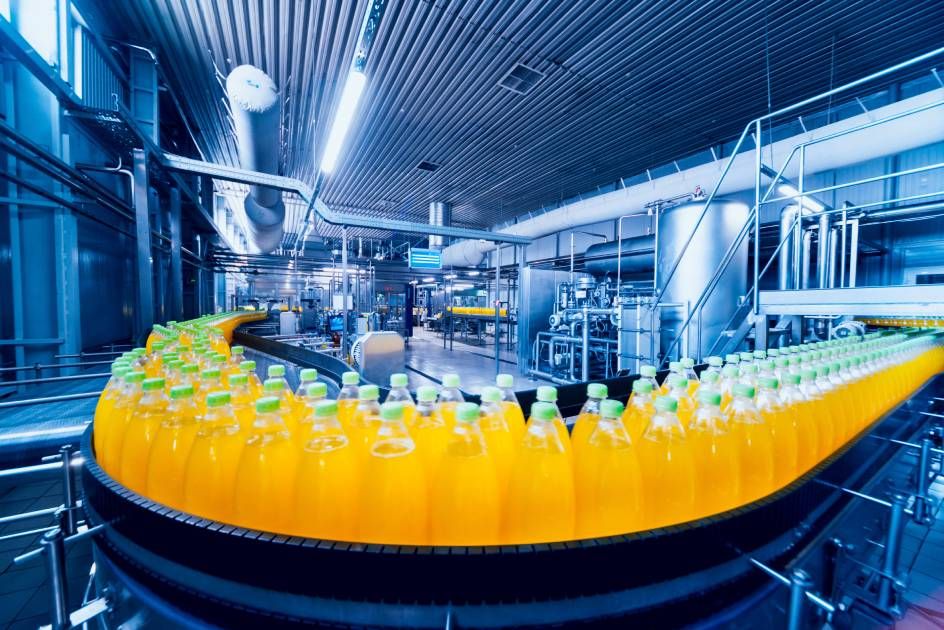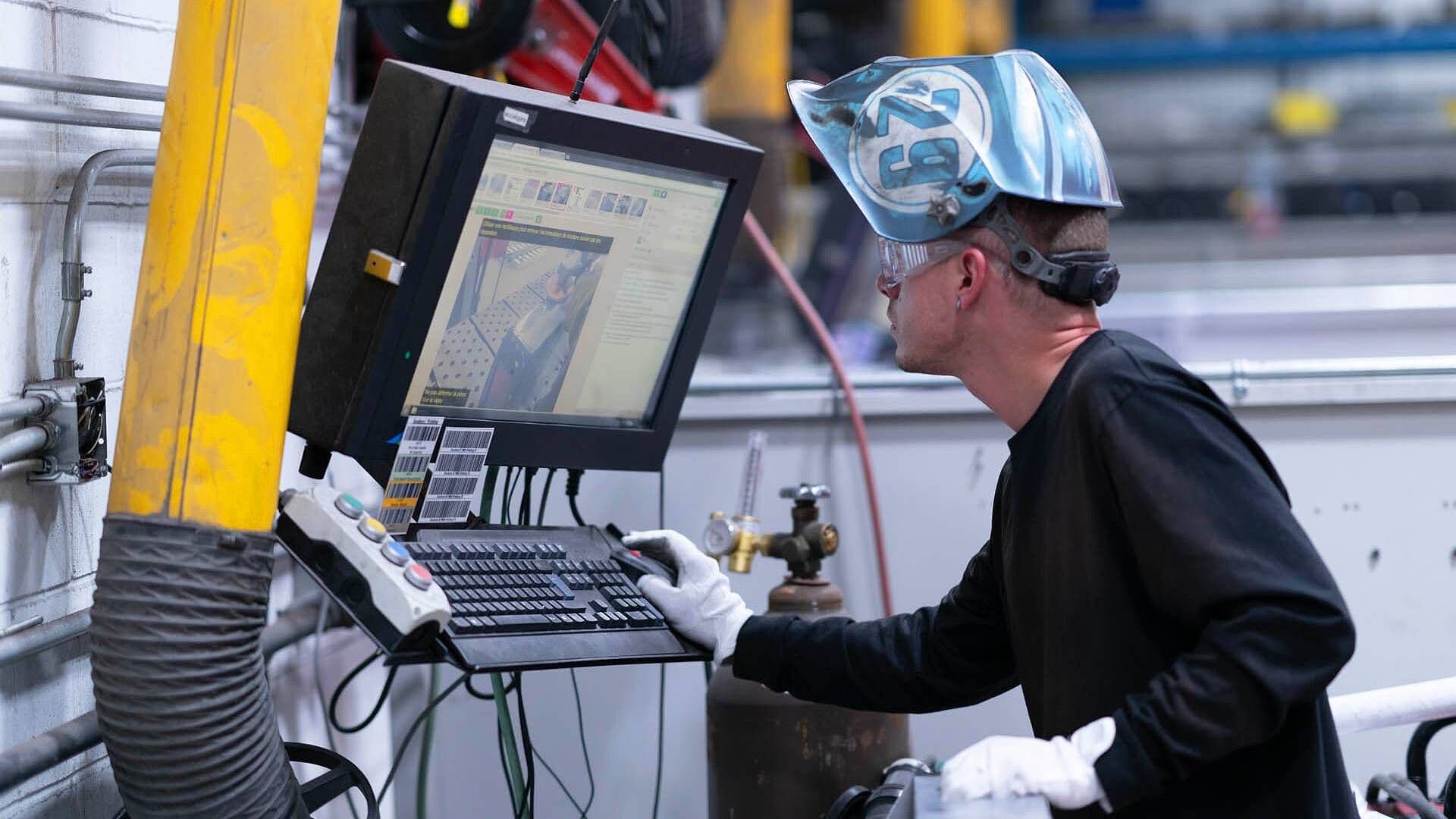Process vs. Resource? It is a question that all manufacturers must consider when implementing new technology into their operations. Do you want it fully integrated into your infrastructure and daily processes, or do you want to simply use the new technology as a resource? What is the best choice for your operation?
If you are anything like me (if you’re reading this, then there’s a good chance you are!), you’ve come up professionally in operations of one sort or another. By operations, I’m referring to environments where a product or service is made, stored, shipped, fixed, provided, etc.
From my perspective, operations is the most exciting and interesting place in an organization. It’s where 80% of an organization’s employees work and where most of the capital is invested and expenses generated. It’s where an organization’s and its customers’ actual value is created, and in some cases, lost.
A lot is riding on the success of your operation and you’ll want to take every advantage you can get to maximize your return on investment. This is certainly true for visual work instructions as companies can choose to use visual work instructions through Process or Resource implementation.
With this in mind, let’s take a look at the Process vs. Resource approaches to work instruction software implementation and answer a key question:
Process vs. Resource: Which is Best for Your Operation?
To answer this question correctly, we need to understand the type of manufacturing you employ and how your various work environments will benefit from digital integration and assistance.
In this discussion, we’ll take a general overview of the different applications and use cases for visual work instructions. Each implementation has merits depending on the specific needs of your operation. Since an operation is full of different processes and activities, you may find a hybrid of the Process and Resource approach as the most appropriate option for your business.

The Process Approach
Fundamentally, the Process approach to work instructions means that documentation is required at each workstation and actively used for each process. The very best visual work instruction applications leverage pictures and video to accurately and concisely guide employees through their complex activities and tasks.
The Process implementation also provides opportunities for
data capturing and production monitoring. Between Process and Resource implementation work instruction integration, the Process approach supplies the maximum return on investment as all features are being utilized. Data is constantly being captured from every event performed by a member of your team. This is especially useful for environments requiring a high level of traceability to WHO did WHAT, WHEN, and HOW.
In a previous article, we discussed the differences between a process and a procedure and explored how work instructions actively guide users through their work, providing every detail of the process.
With this in mind, let’s take a look at 2 environments that are best suited for a Process implementation of digital work instructions.
Process Environment #1. High-Mix Low-Volume Manufacturing
In a high-mix low-volume manufacturing environment, employees fabricate, mix, and assemble a wide variety of products, enabling companies to shift their operations toward customer demand. As we discussed in a previous article, The Connected Worker Platform and the New Connected Economy, with the fast-paced evolution of Industry 4.0 and the growing demands of e-commerce, mixed-model manufacturing has become more prevalent than ever before.
But this style of manufacturing comes with 2 key challenges:
- Irregular process frequencies: In a mixed-model environment, manufacturers need to be flexible and ready to adapt their processes based on the needs of their customers. In certain cases, some processes are performed each week while others are performed every six months, making it difficult for even senior employees to know the ins and outs of every process.
- Difficulty standardizing each process: With less frequent repetition of specific processes and the speed at which new processes are acquired, storing and standardizing your best practices can prove to be difficult.

Visual work instructions enable companies to centralize their operational knowledge. Despite the different types of work and their irregular frequency, every process is accurately documented and readily available to guide the workforce. Your operation is incredibly resilient and flexible with in-depth knowledge and instructions, no matter the work that needs to be done.
This flexibility enables process evolution and improvement to be quick and continuously employed. Instead of updating a paper document and ensuring that all workers have observed the changes, your new and improved instructions are instantaneously updated to your workers’ computer screen. Improvement is seamlessly integrated into the process and the instructions your employees are following.
Process Environment #2. Inspections, Maintenance, & Machine Set-Up
Whether running mixed-model manufacturing or mass-producing a few items, there will always be variations and special activities that need to be performed. Use visual work instructions to build inspection and machine maintenance/set-up guides. This will fully digitize your process, enabling a greater number of workers to perform these special activities.
Inspections: Have workers fill out quality, safety, and conformance reports at the beginning of each shift. Alternatively, you can set up automatic timed inspections after a certain amount of usage has occurred. This will maintain quality and consistency while adding the ability to trace inspection data over time.
Machine Maintenance & Repair: Whether performing preventative maintenance or predictive maintenance through the power of IoT, maintenance actions are not necessarily carried out every day, nor are they the same every time. The Process implementation allows for anyone to perform maintenance work. The workers only have to follow the guide.
Machine Set-up: The pre-production phase of a process is a key area to integrate standardization. In highly automated environments, the machines and automated assembly lines perform the in-process work. As long as everything is set up correctly, the operation will run itself. So having the right machine set-up is crucial to a healthy process.
For troubleshooting, inspections, and machine maintenance/set-up, use visual work instructions to build troubleshooting guides with an If-Then formula.
If error X occurs, then implement solution Y.
If adjustment A is needed, then perform activity B.
This will empower every worker to identify the issue and complete the task by following the guide.
See how Gerber Gear was able to achieve superior consistency in their handmade blades when switching to our digital work instructions.
The Resource Approach
When looking at Process vs. Resource, some companies take a more passive approach to work instruction implementation. Either the work is highly automated with some basic manual functions or the cycle times are so short that interaction with an application would slow production. Whatever the reason, providing electronic, visual work instructions in a simple format that is highly accessible, mobile, and easy to maintain adds quite a lot of value.
Instead of actively interacting with the software, the visual work instructions provide workers with a powerful resource when needed. Terminals are strategically located near to where the work is occurring, but not necessarily at the workstation. Users have the opportunity to reference the documentation during their activities to refresh their memories, but would not use the step-by-step guide functionality.
The resource approach is a great way to prevent knowledge loss within the workforce. Without an effective resource, knowledge loss over time results in quality and consistency issues which greatly affect productivity and profitability.
Let’s take a look at 2 environments that are best suited for the Resource approach.
Resource Environment #1. High-Volume Low-Mix Manufacturing
Unlike high-mix manufacturing, low-mix manufacturing environments are full of repetitive or fully automated processes. In some cases, workers are only expected to perform 1-2 discrete procedures, making it much easier to remember the ins and outs.
For this reason, workers are quickly accustomed to their repetitive tasks and do not necessarily need to interact with a guide.
But even in this repeatable environment, it is still beneficial to have a digital resource for SOPs and instructions. As opposed to a dusty printed binder (which is hard to update or evolve), using a centralized documentation application provides an easily accessible resource for your workers, especially for those with less experience.

Resource Environment #2. Highly-Experienced Workforce
Within a well-established organization, there are bound to be a few key players. These people have a significant number of years within the company and they are a source of knowledge and strength. But what happens when these experienced employees leave?
Due to turn-over, retirement, promotions, etc., lost knowledge is a lost opportunity to standardize your best practices.
As we are observing the growing trends of retirement and the skills gap, the tribal knowledge of these high-skill workers needs to be captured as soon as possible.
Normally, companies find themselves in 1 of 2 situations.
- You have a skilled and experienced workforce: Everyone knows what to do and they know the best way to do it. Now is the opportunity to capture your company's tribal knowledge. Ask yourself: What are my experts doing? How are they resolving issues? What working techniques do they employ to accomplish their tasks?
Documenting how tasks are performed and capturing key operational knowledge guarantees that you will be able to continue using these best practices regardless of a shifting workforce.
- You have a less experienced workforce: This is the time to share the tribal knowledge you previously captured. The next generation of workers will quickly come up to speed if there are accurately documented SOPs and best practices stored within a central program. If workers have questions on how a process should be performed, they can look back at the resource materials.
More often than not, companies experience both situations simultaneously. Work instruction software is the best way to pass on key operational knowledge from senior to new employees. By digitally transforming your operation under Process or Resource implementation, you’ll always be prepared and resilient to the growing challenges and shifts of the industry.

Our work instruction software is versatile to your specific needs. Wherever you fall within the Process vs. Resource debate, VKS is here to help you build and strengthen your operation.
The decision to use either approach is of course dependent upon your specific business, but the most important commonality is the need for well-documented standardized work instructions.
Whether your team is on-site, or in the field, directly involved in manufacturing, or supporting manufacturing, creating standard work instructions is critical to reducing errors, and improving quality & productivity.
With contributions from Shannon Bennett




